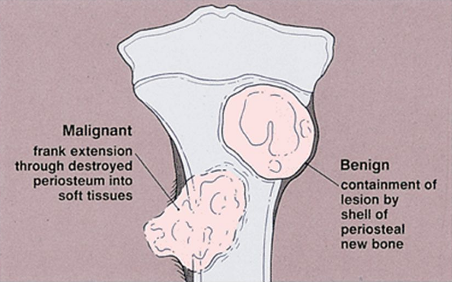What you need to know about Benign Bone Tumor Removal
Contents
- 1 What you need to know about Benign Bone Tumor Removal
- 2 What does the Procedure Involve?
- 3 How Long Should I Stay at my Destination?
- 4 What’s the Recovery Time?
- 5 What About Aftercare?
- 6 What’s the Success Rate?
- 7 Are there Alternatives to Benign Bone Tumor Removal Procedure?
- 8 What Should You Expect Before and After the Procedure
Benign (noncancerous) bone tumors are more common than malignant (cancerous) bone tumors. There are several types of benign bone tumor, including:
-
Osteochondroma is the most common type of benign bone tumor. It usually affects people from the age of ten to thirty.
-
Osteoid osteoma is a bone tumor that occurs more commonly in the early 20s. It usually occurs in long bones.
-
Giant cell tumor typically affects the leg.
-
Osteoblastoma is a single tumor that may develop in long bones and spine. It mostly occurs in adults.
-
Enchondroma appears in the bones of the feet and hand. It is known as the most common type of hand tumor.
A Benign bone tumor does not typically need surgical treatment. However, if the tumors are more likely to spread or become cancerous, or they limit your daily activities, your doctor may suggest you undergo benign bone tumor removal. The aim of this procedure is to prevent the tumor from spreading and transforming into cancer. Taking out the bone tumor can also prevent fractures.

What does the Procedure Involve?
Benign bone tumor removal is typically performed under general anesthesia. After you are anesthetized, your surgeon will proceed to carefully remove the tumor with specialized techniques. Your surgeon will usually remove the tumor by curetting (scraping out) the tumor. They will try to remove the tumor with minimal trauma to surrounding normal tissue in order to give you the highest chance of returning to full and unlimited activities.
Benign bone tumor removal also involves the regeneration of new healthy bone at the site of the tumor. This means that the surgeon rebuilds new, healthy bone where the tumor was removed, usually using a bone graft taken from another part of your body.
In most cases, your surgeon will also perform a biopsy. A biopsy is a sample of tissue taken from your body to be examined more closely under a microscope.
How Long Should I Stay at my Destination?
After benign bone tumor removal, you may need to stay in the hospital for several days. The recommended length of stay is about 10 to 14 days as you need to attend follow-up checkups. In some cases, you may need to stay in the area for a longer period of time. Your medical team and medical travel team will be able to advise you regarding this matter.
What’s the Recovery Time?
Everyone’s recovery time after bone tumor removal can be different, depending on the type, size, and location of the tumor. The recovery period can sometimes be long, especially if the tumor was located at the leg or hand. You may not be allowed to bear weight for about 8 to 12 weeks. You may also need to avoid athletic activity for 9 to 12 months. However, some normal activities and work (office work) may be resumed sooner than this. Your doctor will give you a specific recovery timeline, including when you can resume work, normal activity level, and exercise.
What About Aftercare?
Since you may experience pain for the first week or so after benign bone tumor removal. You will be given painkillers, make sure to take them as directed. It may seem very difficult to get up and move around during the first week, but it is recommended that you start moving about very gradually as it can help with your recovery.
You may need to have physical therapy after your surgery. A physical therapist will teach you exercises that will help regain your flexibility and ease of movement. You may also need to attend regular checkups with your own doctor to ensure the tumor has not grown back.
What’s the Success Rate?
Benign bone tumor removal is a safe and effective procedure with a high success rate. It is reported that most benign tumors respond very well to surgical removal. The chance of the tumor coming back is very low, usually less than 5%.
While the procedure is generally safe and straightforward, it does carry some potential risks and side effects. These include infection, nerve injury, bleeding, and stiffness. However, these risks can be avoided by following your surgeon’s instructions. Choosing the right surgeon is also important for the success of your surgery.
Are there Alternatives to Benign Bone Tumor Removal Procedure?
In some cases, your doctor may only keep an eye on it, to see if they change over time. The monitoring requires follow-up X-rays periodically. Your doctor may also treat the benign bone tumor with medication.
Some benign bone tumors, such as osteoid osteoma, are usually treated by thermal necrosis or radiofrequency ablation (RFA).
What Should You Expect Before and After the Procedure
Benign bone tumors may cause increasing or persistent pain. Its growth can also weaken your bone, leading to a fracture. In some cases, it may transform into cancer, spread to other parts of your body, and even become life-threatening. After successful benign bone tumor removal, you should not feel the pain that you felt before. The surgery will also prevent fracture. The chance of the tumor becoming cancer, spreading, or threatening your life is also reduced. You should be able to get back to your full and active life after the surgery and when you have recovered.
For an in-depth analysis of a Benign Bone Tumor Removal Procedure, watch this short video.
To check prices or to book a Benign Bone Tumor Removal Procedure, in Thailand or anywhere else in the world, head on over to MyMediTravel now!

